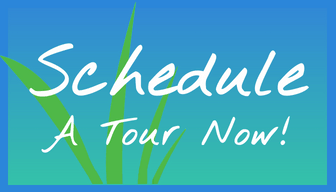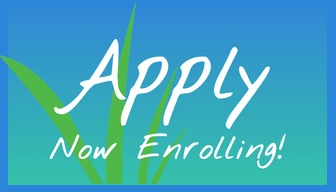 It’s a new year! The world did not end with the Mayan calendar. Congress still struggles with our nation’s issues. Clients are coming in and a new round of teaching Neuromuscular Therapy has begun. The dance continues. I feel very blessed to be teaching with Cate, Pete, Laura and Cristian. I am really enjoying the current group of students; they are open, interested and participating. One of the aspects we emphasize is the integrative nature of massage therapy. In teaching NMT, we put together all the various pieces the students have been exposed to throughout the course. We present a process for exploration that helps us evaluate and treat what we find. We call this the Art of Specificity—the ability to meet each client’s needs by bringing all our skills to the session. This includes using our communication skills, massage techniques, palpation skills, intuition, knowledge of anatomy and kinesiology, self-care and, above all, the ability to make deep contact and encourage awareness. When all of this is integrated, one becomes flexible in their approach. The client is engaged. Specific needs are addressed. Therapy happens! We also spend a good bit of time addressing why we are doing what we do. Often, I am asked how NMT is different from Connective Tissue Therapy. I realize how important it is for us to know what we are working with and why. The movement body is an interaction of parts and systems—all essential to a well functioning body. Each modality or approach offers a path to address these interactions. Thus our knowledge of how the body operates and what we are touching can greatly enhance the ability to meet our client’s needs. When we were in school we spent time studying the various systems and muscles involved in this interaction. We were learning our craft. Then we graduated, became licensed and started our practices. One of the things that I have observed, while teaching and attending various continuing education classes, is how easy it is to forget what we once knew. If we do not review or recall information on a regular basis, it begins to recede from memory. This is why we are asked to take regular continuing education as part of renewing our massage license. It is important to keep interacting with all aspects of this profession we practice. How clear are you on what you are touching? Can you name what you are touching? Can you think of three different ways to release a trigger point? How is your recall of the parts and systems? Is your technique applied appropriately? If your answer is not what you would like it to be, it is time to sign up for a class and continue the process of learning. I encourage you to find a class that interests you. There are lots of opportunities listed on the FSM website. It is important to keep ourselves up to date and tickling our recall of the different aspects of this work we do. It is a process of learning. It does not have an end. There is always room for growth. If you would like a review of the structures and musculature of the upper or lower extremity and some review of various techniques to address these areas, I am offering these classes a couple times during the next few months. Each class is 6 CEU hours and can be taken singly or combined. To register or get more information on the palpation classes, contact Frank Merillat directly at fmerillat@mac.com or call 352 371-0743.
It’s a new year! The world did not end with the Mayan calendar. Congress still struggles with our nation’s issues. Clients are coming in and a new round of teaching Neuromuscular Therapy has begun. The dance continues. I feel very blessed to be teaching with Cate, Pete, Laura and Cristian. I am really enjoying the current group of students; they are open, interested and participating. One of the aspects we emphasize is the integrative nature of massage therapy. In teaching NMT, we put together all the various pieces the students have been exposed to throughout the course. We present a process for exploration that helps us evaluate and treat what we find. We call this the Art of Specificity—the ability to meet each client’s needs by bringing all our skills to the session. This includes using our communication skills, massage techniques, palpation skills, intuition, knowledge of anatomy and kinesiology, self-care and, above all, the ability to make deep contact and encourage awareness. When all of this is integrated, one becomes flexible in their approach. The client is engaged. Specific needs are addressed. Therapy happens! We also spend a good bit of time addressing why we are doing what we do. Often, I am asked how NMT is different from Connective Tissue Therapy. I realize how important it is for us to know what we are working with and why. The movement body is an interaction of parts and systems—all essential to a well functioning body. Each modality or approach offers a path to address these interactions. Thus our knowledge of how the body operates and what we are touching can greatly enhance the ability to meet our client’s needs. When we were in school we spent time studying the various systems and muscles involved in this interaction. We were learning our craft. Then we graduated, became licensed and started our practices. One of the things that I have observed, while teaching and attending various continuing education classes, is how easy it is to forget what we once knew. If we do not review or recall information on a regular basis, it begins to recede from memory. This is why we are asked to take regular continuing education as part of renewing our massage license. It is important to keep interacting with all aspects of this profession we practice. How clear are you on what you are touching? Can you name what you are touching? Can you think of three different ways to release a trigger point? How is your recall of the parts and systems? Is your technique applied appropriately? If your answer is not what you would like it to be, it is time to sign up for a class and continue the process of learning. I encourage you to find a class that interests you. There are lots of opportunities listed on the FSM website. It is important to keep ourselves up to date and tickling our recall of the different aspects of this work we do. It is a process of learning. It does not have an end. There is always room for growth. If you would like a review of the structures and musculature of the upper or lower extremity and some review of various techniques to address these areas, I am offering these classes a couple times during the next few months. Each class is 6 CEU hours and can be taken singly or combined. To register or get more information on the palpation classes, contact Frank Merillat directly at fmerillat@mac.com or call 352 371-0743.



